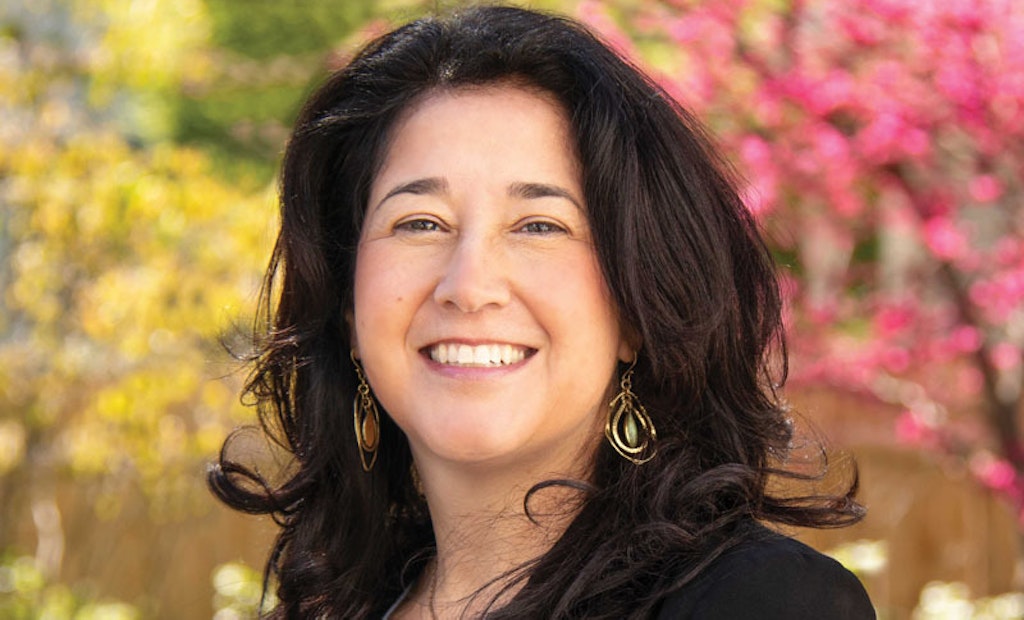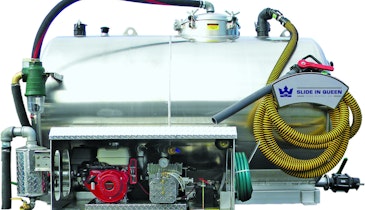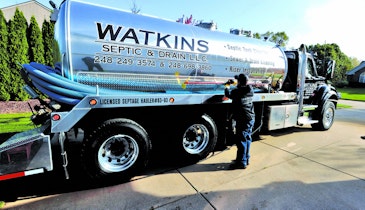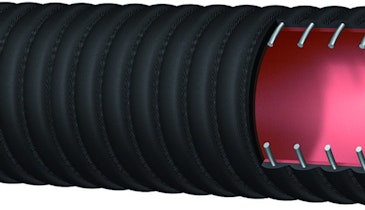
Maureen Cunningham is chief strategy officer and director of water for the Environmental Policy Innovation Center.
Interested in Business?
Get Business articles, news and videos right in your inbox! Sign up now.
Business + Get AlertsPumper often carries news about grants that help people pay for septic system repairs, and while many wastewater professionals know in their bones that money is lacking, now there’s evidence to back up those feelings.
Last year the Environmental Policy Innovation Center published Investing in America’s Onsite Wastewater Treatment Systems for Equity and Sustainability, a report outlining what governments should do to improve onsite treatment. The report is available here: www.policyinnovation.org/publications/investing-in-americas-onsite-wastewater-treatment-systems-for-equity-and-sustainability.
To learn more, Pumper talked to Maureen Cunningham, chief strategy officer and director of water for the organization.
Pumper: What would you like people to get out of your report?
Cunningham: I think one of the things is that when we started the research, we didn’t know what kind of funding was out there for onsite systems. We know it’s a little bit more challenging than funding for centralized systems in a lot of ways because it depends so much on the homeowner.
There are funding mechanisms out there, and they’re potentially underutilized, and maybe not as accessible as they could be.
Pumper: What started you looking at onsite?
Cunningham: Our focus on our water program is really on water equity, and I think onsite wastewater treatment systems really highlight some of the inequities that exist. We know from the data that onsite users tend to be low-income. There’s not a lot of conclusive data on racial disparity, but the data points to potential racial imbalance in access to plumbing.
Pumper: Your report recommends collecting more information. What kind of information do we need?
Cunningham: Having an inventory of systems per state would be really helpful. According to one article we found in the Washington Post, only Georgia has an inventory. Beyond that, I don’t think a lot of communities have an inventory. I live in the town of Bethlehem, New York, I actually am a town council member, and I don’t know how many septic users we have even in our town.
The next line of information we need to gather is where septic systems are potentially failing. At Canandaigua Lake (Finger Lakes region of upstate New York) they take a watershed approach, and it becomes a water quality issue to inspect septic systems.
Pumper: Are there two or three main things you’d like to see happen?
Cunningham: For the federal government it would be collecting more data and encouraging the use of the State Revolving Fund programs, and maybe more education and outreach about those programs. The U.S. Department of Agriculture rural water program, with a few tweaks, could be even more accessible. The program is limited to homeowners, not renters. There’s also an age limit of 62 and older, so that should be made more available to low-income younger people.
More states need to use third-party intermediaries. With 22 million households with onsite systems, the process of getting contracts and funds out is a challenge. At the state level there are a lot of examples of great programs. Ohio EPA distributes the principal-forgiveness loans to county health departments, and then county health departments can get the money out much easier than they could at the state level. Oregon and Washington are using community development financial institutions as the intermediary.
Pumper: We’ve heard from pumpers for years about how hard it is to get people to pay attention to what’s buried in the yard. Do you have any good ideas about that?
Cunningham: That’s a really good question. The Canandaigua Lake program is a good example of a local program that’s very hands-on. I think local governments are key to outreach.
Pumper: A surprising item in your report was the graph showing states that regularly receive money from the Clean Water State Revolving Funds. Massachusetts was on top with $128.8 million, or 27.5% of the total. What do you think?
Cunningham: Massachusetts may not represent the greatest need. They may be more effective at getting the money. I talked to the fund administrators both there and in Minnesota (second with $95.7 million), and I was very impressed. Revolving fund programs are administered at the state level, and while there is guidance that comes from EPA, we see a lot of difference in how those programs are administered and how effectively they get dollars out.
That’s really our takeaway: The SRF program is underutilized for onsite wastewater treatment systems.
Pumper: What kind of response did you have to your report because we didn’t find much?
Cunningham: I’d like to think maybe that reflects the amount of attention to onsite wastewater treatment systems, which is very low in some ways compared to centralized systems.
We did get some attention and questions at the executive level of government and had some follow-up with a group of EPA folks who work on onsite wastewater treatment systems and asked us to present.
Someone from the White House responded to the batch email that announced the report. As policy folks, that’s who we want. If the White House and the EPA are responding, we’re happy.
Pumper: Any final thoughts?
Cunningham: Onsite issues aren’t isolated. This is about the human right to sanitation, but that involves a collective responsibility of local, state and federal governments. It also means looking not just at decentralized wastewater treatment but at the whole issue of clean water. If the goal is water quality and protecting water, in the end failing onsite systems are everybody’s problem.





